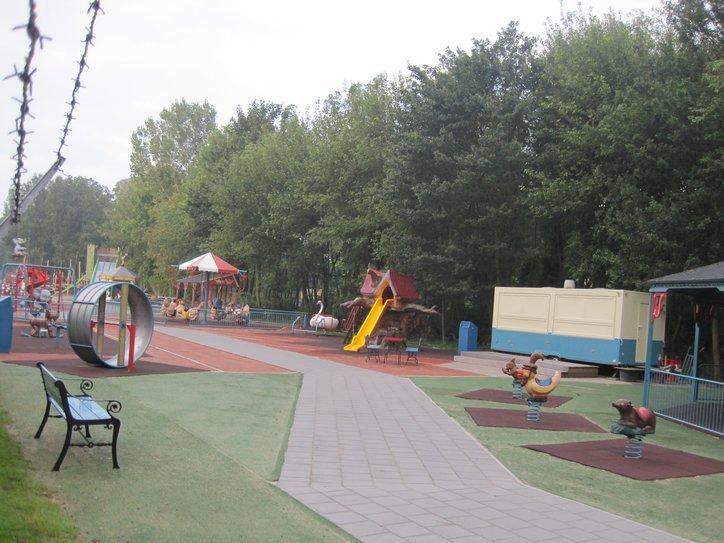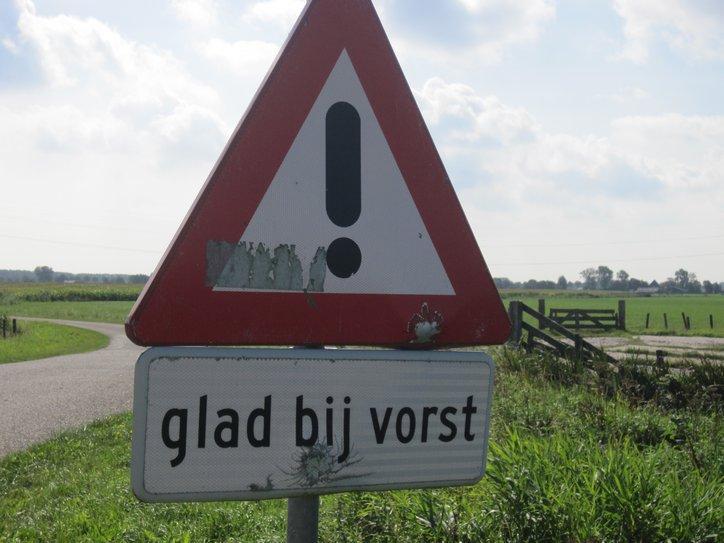September 8, 2012
Day 112: Enkhuizen to Egmond, Netherlands
We did not really intend to cycle back in to Enkhuizen, but the way out of town from our campsite on the outskirts eluded us. So we went back in to town, for a completely fresh start. It worked out well. Once you have seen a town centre in the full hubbub of mid-day, it is interesting to look at it in the cold light of early morning. Then, the shopkeepers are just setting up, delivery trucks are parked around, and there are few people obstructing the views or photo angles.
We came to the corner with the bakery, and decided to give it a try. With the shelves full, it looked pretty good. And what we got was “fine”, not great, but ok. We also swung around to the Aldi supermarket and loaded up some more “TV dinners”. By this we mean precooked meals that only need heating. We buy two the same and dump the total contents in one pot. If you have cycled far enough, it’s great.

| Heart | 0 | Comment | 0 | Link |

| Heart | 0 | Comment | 0 | Link |

| Heart | 0 | Comment | 0 | Link |
We now seem to be using a combination of cycle direction signs and the node system. In town, we picked up the first sign for the chain of nodes that would eventually takes us to Alkmaar, and we were off.
Our way featured cute houses – square with huge pyramidal roofs, fields of cows and sheep, and quiet roads – one car lane wide with one bike lane on either side. By now, we have seen this all before. So like seemingly everyone else in central Holland, we were fascinated to come upon a scene of a large tractor that had somehow lost its trailer load of straw and become mired in a small canal.
The police had come out with their complement of motorcycles and a couple of cars, and were directing traffic. Two other similar tractors had come to the rescue, and were actively engaged in flipping the trailer and trying to get tow line on their fallen comrade. We, and a lot of others were entranced, watching the most exciting thing that has happened since the dike broke in 1675.
I the end, the tractor came out fairly easily – no thrashing about, and the helper tractor did not fall in. Still, we felt we had got our money’s worth.
The iconic windmills that are the de facto symbol of Holland are not advertising hype. They really are here, everywhere. We were able to cycle right up to a few, and we ran into a couple of lines of three or four in a row. These mills are or were employed in water control, but different models can also grind grain, press oil seeds, or perhaps make electricity.
We were fortunate to happen on a flour grinding mill, with an attached organic bakery. The one thing they can reliably make here is appel geback, and we really enjoyed the one at this place. Better, though, was that the miller took us inside the windmill, and though the wind was light got it spinning for us a little. We only made about a teaspoon of flour, but we were able to see how the thing works.
To really make flour requires the winter winds, but we are always impressed when we see water, and now wind, mills with their quiet operation and pleasing wooden parts. Four km from Alkmaar we were still just cycling in pastures, but in short order we were at a broad area with a large canal and large roundabouts. It was nothing like the nerve wracking high speed traffic approaches to many another city, but it was enough to get us just slightly lost (and to disagree about which way to go). As it turns out, all roads lead to downtown, and downtown was a beehive.
We had caught the last couple of hours of the Saturday market , which seemed to extend through all the narrow streets at the centre. The streets were packed with people. We had already given up on finding our next “node” sign, so we just headed into the densest crowd, where we expected the most fun would be.
The venders were a mix of dry goods sellers (clothes, shoes, wallets, bike parts, etc.) , food sellers (fruits, vegetables, cheese, meat) and ready to eat sellers (giant donut balls, Dutch cookies, Indonesian food, Vietnamese food, French fries). We zeroed in right away on the cheese sellers, buying cheese that looked to be both mild (for Dodie) and flavourful. The cheese is graded here by fat content and by deviation in age from “medium”, but there are also many flavouring things (like peppers or herbs) that can be added.
One very pleasant thing (since we not crabby today) was that we were repeatedly stopped by people who asked a few of the Usual Questions and then wished us well. Often, if they seemed really interested, we would give them our slip of paper with the link to this blog. We want to get that hit count well over 100,000!
A lot of times people would say that they were responding to the Canadian flag stickers that we have on panniers. They love Canada here, and the reason always given is the liberation in WWII. This is fairly understandable, but on the other hand neither we nor the Dutch people who are speaking to us had anything directly to do with it.
One woman, Maria, was a pianist and composer, originally from France. We met her just outside the Grote Kerk. This is a large church building whose earliest origins are from the year 600. It was a catholic church until 1572, but its interior had been largely destroyed in the Reformation (1566). It was a Protestant church until 1991, when it was restored and turned into a museum, with concerts and some other kinds of social activities.
Inside there is a grand organ, an also a smaller one. As we stood outside talking to Maria, a man joined the conversation, chipping in that the smaller organ was built in 1511 and is the oldest playable organ in the Netherlands. I assumed that the man was a friend of Maria, but no. It was just a small gathering in what seems to us a very friendly place.
We also continued to notice a few people from countries that could be former Dutch colonies. I threw in a photo below of a quite slinky maybe Indonesian girl – anything to increase the hit count! Another example is a local man who spoke to us at some length, but whose wife and daughter were from Ecuador. That is no doubt just a coincidence, and not a social or historical thing.
We looked at all the activity in Alkmaar, the ethnic restaurants, and the tilty buildings, and thought about camping nearby so as to wander around for another day. As usual, though, the urge to move on won out, and we headed west, toward the North Sea.
We came to rest at a camping called Camping de Markiess, near Egmond. For 15 euros we got almost exactly nothing – just a patch of grass, literally a bike ride from the sanitary block. The lady actually showed us out here on her bike, and we have not had the energy to go look at the facilities, if any. We are surrounded by a trailer slum, with people sitting in front on lawn chairs, watching our every move. We must be the most exciting thing since the tractor fell in the canal!
Oh well, it’s just one night. And for 5 euros, yes 5 euros, they sold us internet access, so as long as the battery holds up, we are connected to the world!

| Heart | 0 | Comment | 0 | Link |

| Heart | 0 | Comment | 0 | Link |

| Heart | 0 | Comment | 0 | Link |

| Heart | 0 | Comment | 0 | Link |
Today's ride: 73 km (45 miles)
Total: 5,882 km (3,653 miles)
| Rate this entry's writing | Heart | 0 |
| Comment on this entry | Comment | 0 |





























